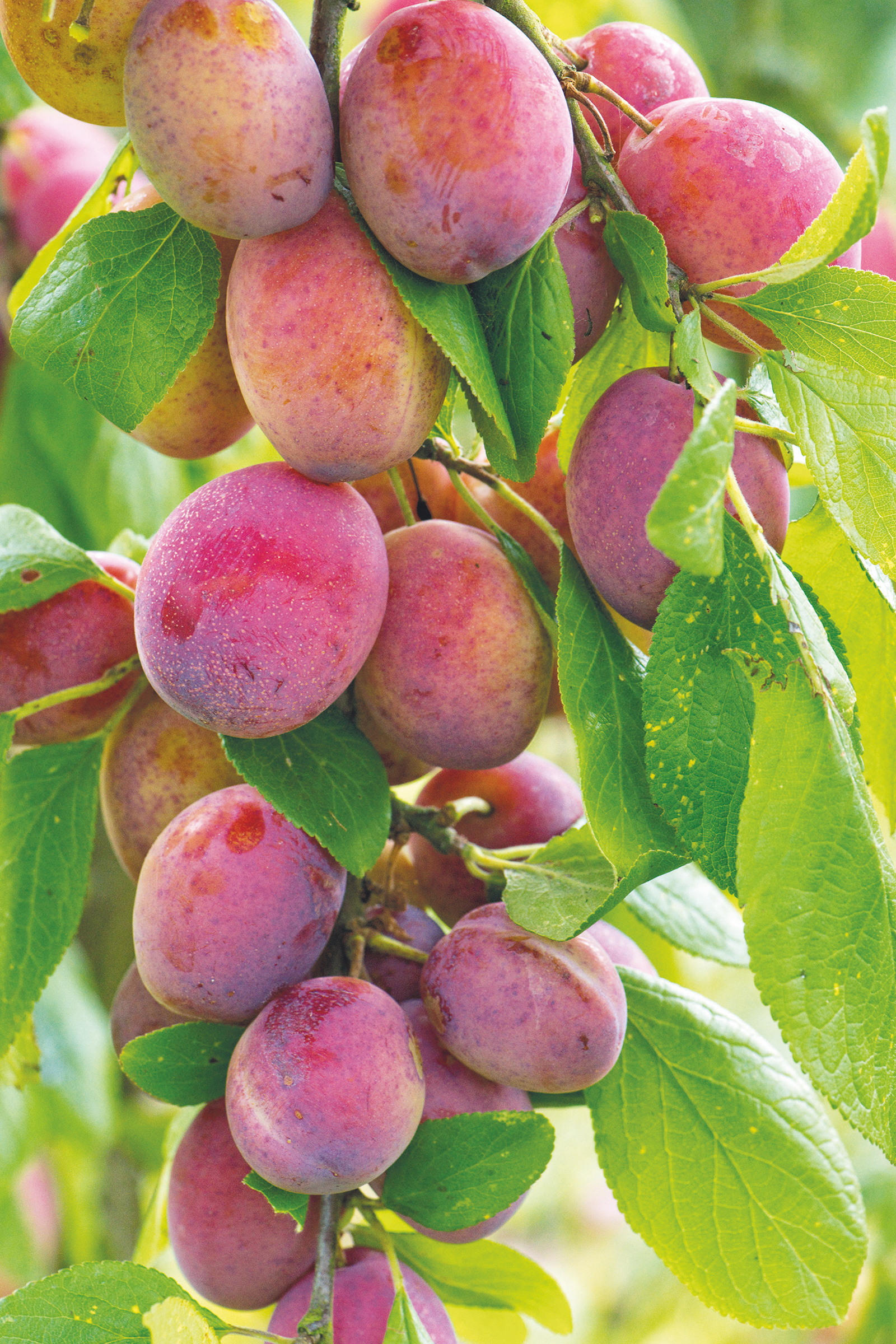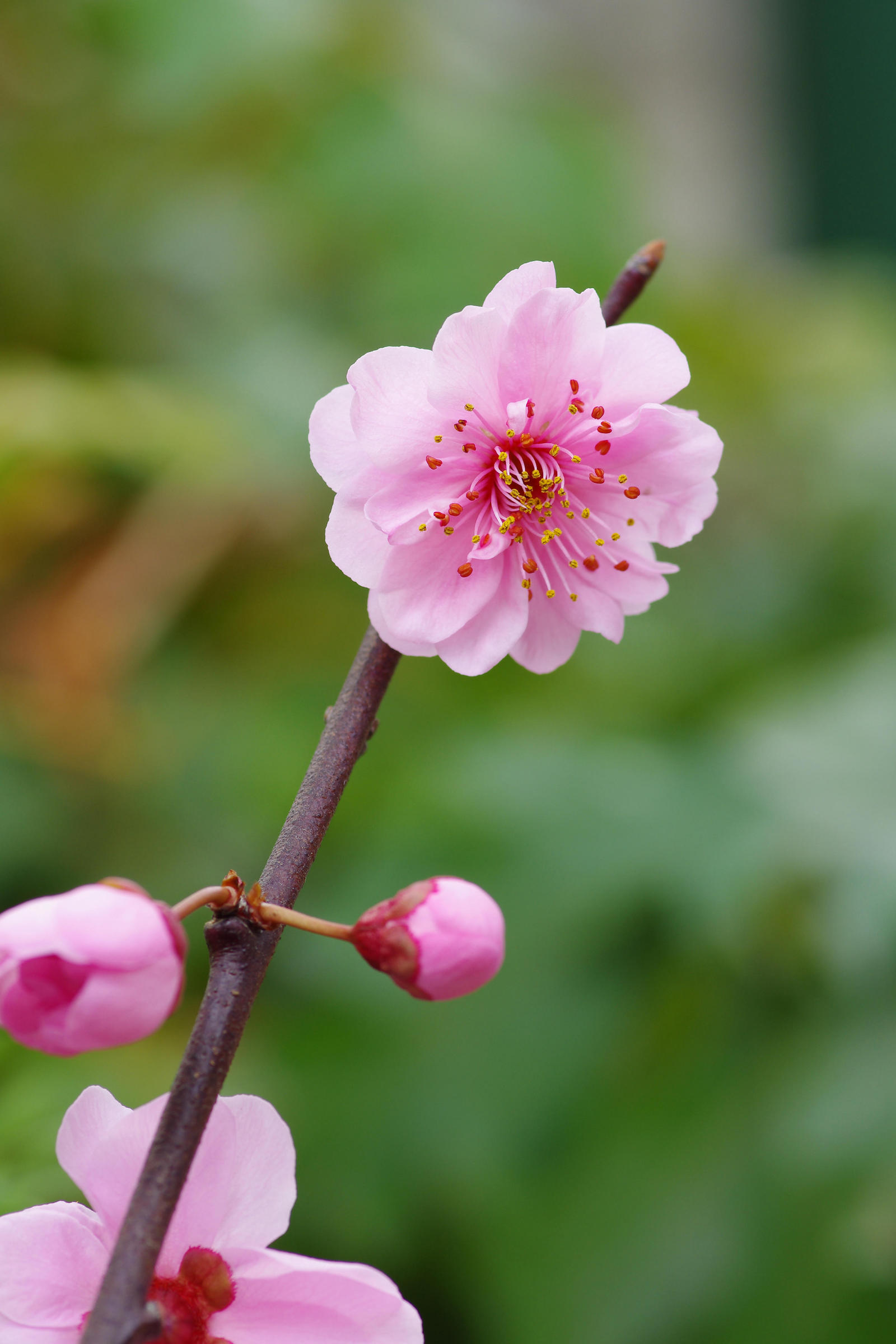When to plant plum trees – for a bumper fruit crop
Plan your gardening calendar and diarise when to plant plum trees for a strong and healthy specimen


Easy-to-care-for plum trees are a boon for any backyard, providing beautiful blossoms in the springtime, wonderful foliage in the summer, and richly colored, juicy fruit in September and October.
When you plant plum trees will depend on whether you opt for bare root or potted trees. Either way, they are one of the best fast-growing fruit trees and will make a gorgeous addition to your garden.
When to plant bare-root plum trees

It's a straightforward garden job to plant bare-root trees.
Bare-root plum trees are in a dormant state, sold without any soil around the roots of the plant. Like any other bare-root fruit tree, plum trees are best planted outside between fall and spring. In fact, this is the only time of year when you will be able to purchase the trees, ready for planting.
‘You can actually plant bare-root plants anytime between leaf fall (when deciduous plants shed their leaves) and bud burst (when they start to grow back again in spring), but autumn is best because solid conditions encourage new rooting,’ explains award-winning gardener, Alan Titchmarsh. ‘In winter the ground is often too boggy or else frozen solid so they can often just rot. But if conditions are good you can keep going right through the winter, and as late as mid-March.’
Bare-root plants must be planted as soon as possible after purchase, as their roots are unprotected. If you’re not ready to plant them into their final position, choose any patch of soil and plant the tree temporarily in order to protect the roots and keep the plant alive.
When to plant potted plum trees

Trees that are supplied in containers have their roots surrounded by soil and so are already growing. Unless they are a small tree that is happy to be grown in a pot, they will need to be transplanted into their optimum position in the garden.
Design expertise in your inbox – from inspiring decorating ideas and beautiful celebrity homes to practical gardening advice and shopping round-ups.
Although it’s best to plant potted plum trees as soon as possible, they will remain happily in their pots for a few weeks. Remember to keep them watered until you are ready to plant in the garden.
If you are buying a plum tree in person, rather than ordering from a nursery, look for a tree with a strong leader (main stem), with a balance of branches growing off from it. You can then decide how and when to plant your plum tree to give it the best start of developing well and producing a good crop of fruit.
Where to plant plum trees

Our guide on how to plant plum trees has all the information you need to position your tree and plant it to ensure it establishes well.
‘All plums do well in slightly heavy, damp soil, although perhaps it is better to say that they do not do so well on very hot, dry, free-draining sites,’ says gardener Monty Don. ‘Quite a few varieties, such as “Victoria”, “Czar” and most greengages do well in some shade, even on a north-facing wall. When grown in shade they develop their sugars more slowly and so have a richer, more complicated flavor.’
Andrea has been immersed in the world of homes, interiors and lifestyle since her first job in journalism, on Ideal Home. She went from women's magazine Options to Frank. From there it was on to the launch of Red magazine, where she stayed for 10 years and became Assistant Editor. She then shifted into freelancing, and spent 14 years writing for everyone from The Telegraph to The Sunday Times, Livingetc, Stylist and Woman & Home. She was then offered the job as Editor on Country Homes & Interiors, and now combines that role with writing for sister title homesandgardens.com.
